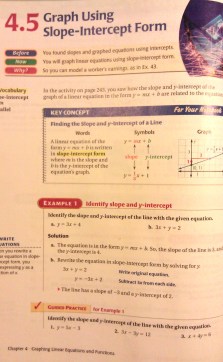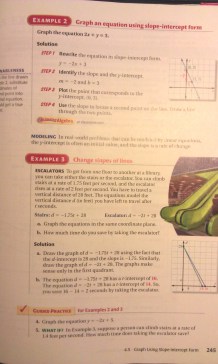Division Lessons
We are starting division at our school next week! It is very exciting because it is a brand new idea for our students. I have videotaped myself outlining and presenting the lessons below so that our team can prepare. You will notice that the main idea is to link division to repeated subtraction and to its inverse, multiplication. We start by using a concrete model to build this understanding. Please excuse the shaky camera; I had a student film me. 🙂
(There’s no school on Monday and then on Tuesday, we’ll learn multiples of ten.)
Wednesday: 5-1 Model Division
Thursday: 5-2 Division as Equal Sharing
(There’s no school on Friday and then on Monday, we’ll learn multiples of five.)
Tuesday: 5-3 Relate division and subtraction
Wednesday: 5-4 Relate division and multiplication
Thursday: 5-5 Inverse Operations
Test on Friday!
Subtraction Algorithm
Once students have spent time understanding the concept of subtraction and modelling how to regroup, they are ready for the algorithm. At some point, they simply have to memorize the algorithm. That is where this chant comes in:
This is how the chant changes when there are zeros:
Geometric Thinking
We are starting to do a weekly hour of math exploration every Friday. For the next five Fridays that time will focus on Geometric Thinking. Students will be working on the following standard:
CCSS.Math.Content.3.G.A.1 Understand that shapes in different categories (e.g., rhombuses, rectangles, and others) may share attributes (e.g., having four sides), and that the shared attributes can define a larger category (e.g., quadrilaterals). Recognize rhombuses, rectangles, and squares as examples of quadrilaterals, and draw examples of quadrilaterals that do not belong to any of these subcategories.
This standard requires students to spend a lot of time identifying properties and then sorting and classifying shapes based on their properties. They will need to learn a lot of new vocabulary. I have found it is best for students to split this up into one category of shape per week. In our case, every Friday students will learn to look for a new property. They will also learn the new verse to a song that will help them memorize the names of the shapes.
These are the lyrics to the song (to the tune of The Twelve Days of Christmas):
On the first day of Geometry, my teacher gave to me: a quadrilateral with four sides!
On the second day of Geometry, my teacher gave to me: parallelogram and a quadrilateral with four sides!
On the third day of Geometry, my teacher gave to me: rectangles with right angles, parallelogram and a quadrilateral with four sides!
On the fourth day of Geometry, my teacher gave to me: equal-sided rhombus, rectangles with right angles, parallelogram and a quadrilateral with four sides!
On the fifth day of Geometry, my teacher gave to me: square’s the VIP, equal-sided rhombus, rectangles with right angles, parallelogram and a quadrilateral with four sides!On the fifth day of Geometry, my teacher gave to me: square’s the VIP, equal-sided rhombus, rectangles with right angles, parallelogram and a quadrilateral with four sides!
The video above is of some of my former fifth graders (now seventh graders) singing the song. They make a small mistake during the fourth verse because they learned the song two years ago, but you get the idea.
The Check-Your-Work Battle
Let’s assume that students want to get the right answer. It follows that they would be willing to check their work. But this is a constant battle for many teachers. There must be something more to students’ unwillingness to take our great advice.
When solving systems of equations, I teach students to set up four boxes to separate the steps. The fourth step is to check the solution by plugging it back into the original equations. Most of my students complete all four steps because they know that they will get detention otherwise. But they still get the wrong answer.
I noticed that even though they are checking their work, they will often fudge the check at the end so that it looks like their solution worked even though it didn’t. Or sometimes they will check their work, see that it is wrong and leave the entire problem anyway. When I asked someone why they did this, they said, “Well, I’d written in pen.” This is a separate battle that we will save for another day. I refuse to believe that most students are checking their work and still getting it wrong because they are lazy. They must not understand how checking their work helps them get the right answer. And if you think about it, this makes sense. Checking one’s work just tells you if you’ve got the wrong answer.
This is why it is not enough to teach students to check their work. We must teach them how to go back and fix their work after they realize it is wrong. And how do students learn? By watching us do something? No. They learn by having to do it themselves.
This is how I realized that my feedback was actually teaching students bad habits. In my attempt to be the very best teacher ever, I was running around from desk to desk catching silly mistakes and telling each student exactly where they went wrong. “You missed a negative sign.” “Seven times five isn’t thirty.” “You substituted for y instead of x.” It got to the point where after a student checked their work and saw they’d made a mistake, they’d raise their hand and ask for help.
But if this is how students practice checking their work then why would they do it when they’re on their own and I am not there to tell them where they went wrong? Instead, they must learn to do this for themselves. That means that I am not being Super Teacher when I give them very specific feedback. It would actually be more helpful to say, “Nope. Find the mistake.”
This kind of feedback involves a different battle that usually sounds like this:
Me: There’s a mistake. Go back and find it.
Student: Taking one millisecond to look at their paper… I can’t.
Me: It’s there. You’ll find it.
Student: Making taking a few milliseconds… I still can’t find it!
Me: It’s there. Go back to the beginning and look at each step. It’s a little mistake.
Student: Seriously, please! Help me! It’s not there! I’ve BEEN trying!
Me: Of course it’s there. You checked your work and saw it was wrong. Keep looking.
Student: After a few minutes… Ohhh!
It’s kind of nice when you realize that you can actually teach better by doing less. At first, this new kind of feedback might frustrate students. But ultimately it is setting them up to be more independent mathematicians.
I will break standards into objectives.
When I found myself writing paragraphs in response to a reader’s comment, I decided the topic deserved a full post. The comment said, “I have been reading your blog in preparation for teaching my son math at home next semester… I love how you rephrased the math standards as , “I will” statements and posted all of them on the wall. I would like to do something similar. Where do you suggest I begin? We are aligned with the common core. Did you just rephrase each standard listed there?” Here’s my reply…
 Thanks for your comment! I don’t know if you had a chance to read this post. It explains how a fellow teacher and I broke the standards into smaller daily objectives in order to write a plan for the school year. This is especially important with the Common Core standards because each one is so dense and complicated.
Thanks for your comment! I don’t know if you had a chance to read this post. It explains how a fellow teacher and I broke the standards into smaller daily objectives in order to write a plan for the school year. This is especially important with the Common Core standards because each one is so dense and complicated.
Sometimes you’ll read a standard and the objectives will just start coming to you. I found that the case when I taught fifth grade because the concepts were ones I understood very well. Now that I’m teaching eighth grade, it is a lot harder. These are some strategies that have helped me:
(1) Find problems that test a particular standard and ask yourself, “What are all the things I need to know how to do to solve this problem?” You can find sample questions at various state websites. I like the Massachusetts question search the best. But I think the page is still being updated, and it isn’t quite clear which question goes with which common core standard yet. Illustrative Mathematics has questions that are reviewed by some of the same people who wrote the Common Core standards. I think the questions are really challenging for each grade level, but what do I know?
(2) Find a thought partner and brainstorm. It is likely that another person will think of objectives you didn’t.
(3) Study a relevant section in a textbook and see what different objectives they include. Sometimes the objectives aren’t explicit and sometimes there are several in one lesson, but you can parse it out.
This is one lesson in the McDougall Littel Algebra I textbook. As I hope you can see from the photograph there are many ideas on just the first few pages of the lesson.


I would list the objectives as:
-I will identify the parts of an equation in slope-intercept form.
-I will graph a line given the slope and y-intercept.
-I will rewrite equations in slope-intercept form.
-I will graph real-life functions using the slope and y-intercept.
This might be four days of lessons, depending on the student. All the objectives seem to be leading to standard 8.F.5. but only the last one seems directly connected: “Describe qualititatively the functional relationship between two quantities by analyzing a graph (e.g., where the function is increasing or decreasing, linear or nonlinear). Sketch a graph that exhibits the qualitative features of a function that has been described verbally.” It usually takes many standards to reach an objective, and one objective might be a part of several different standards.
One last thing to be ready for – I have found that there are usually at least 150 objectives in a single grade level. That is because the objectives should be bite-sized, something you can explain in less than 7 minutes. Objectives should also be actionable, which means you should be able to ask your son a question or give your son a problem to see if he has mastered the objective.
Hope this is helpful! It would be wonderful to see some examples of how someone has broken down a standard into smaller objectives in the comments!